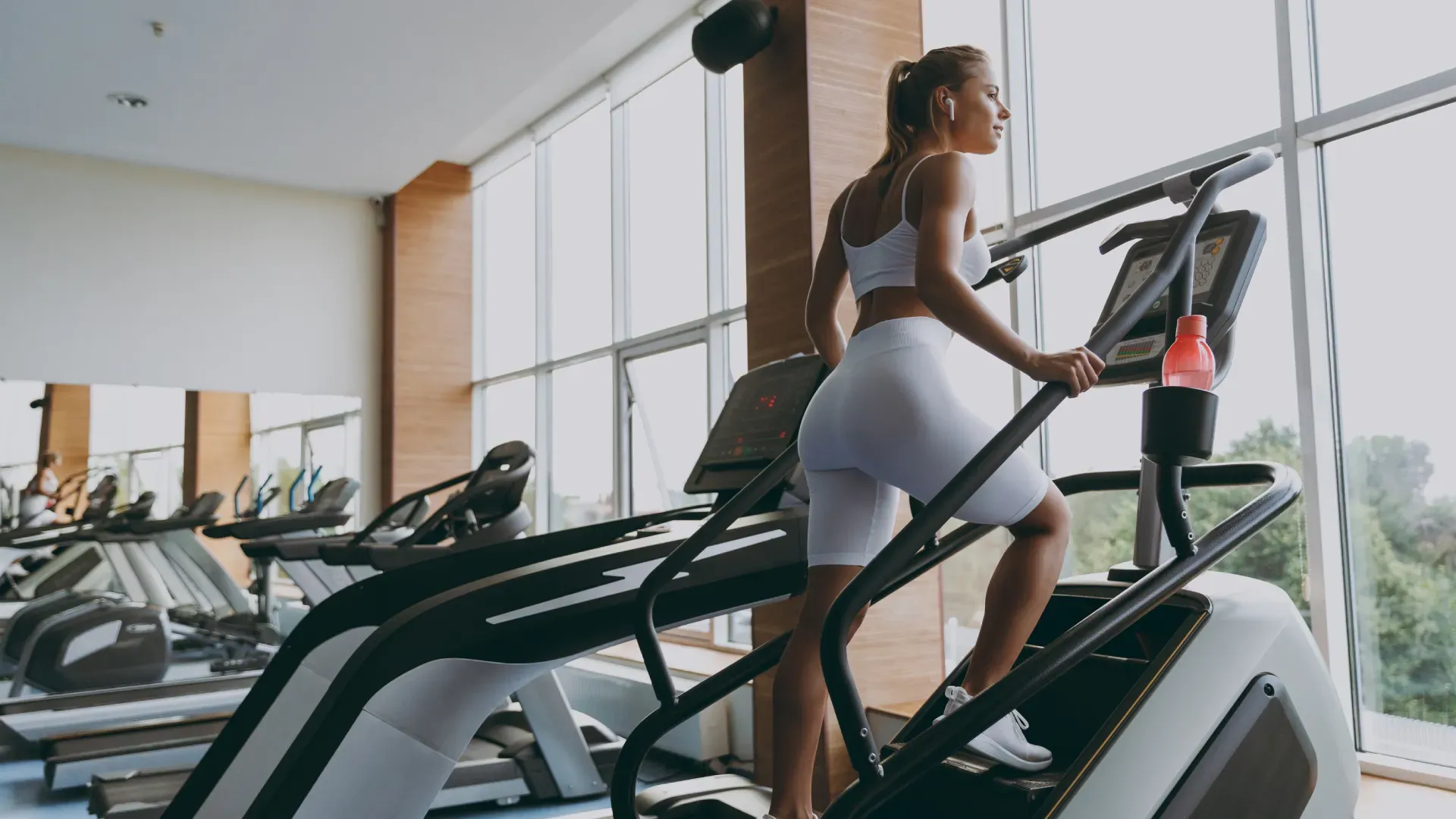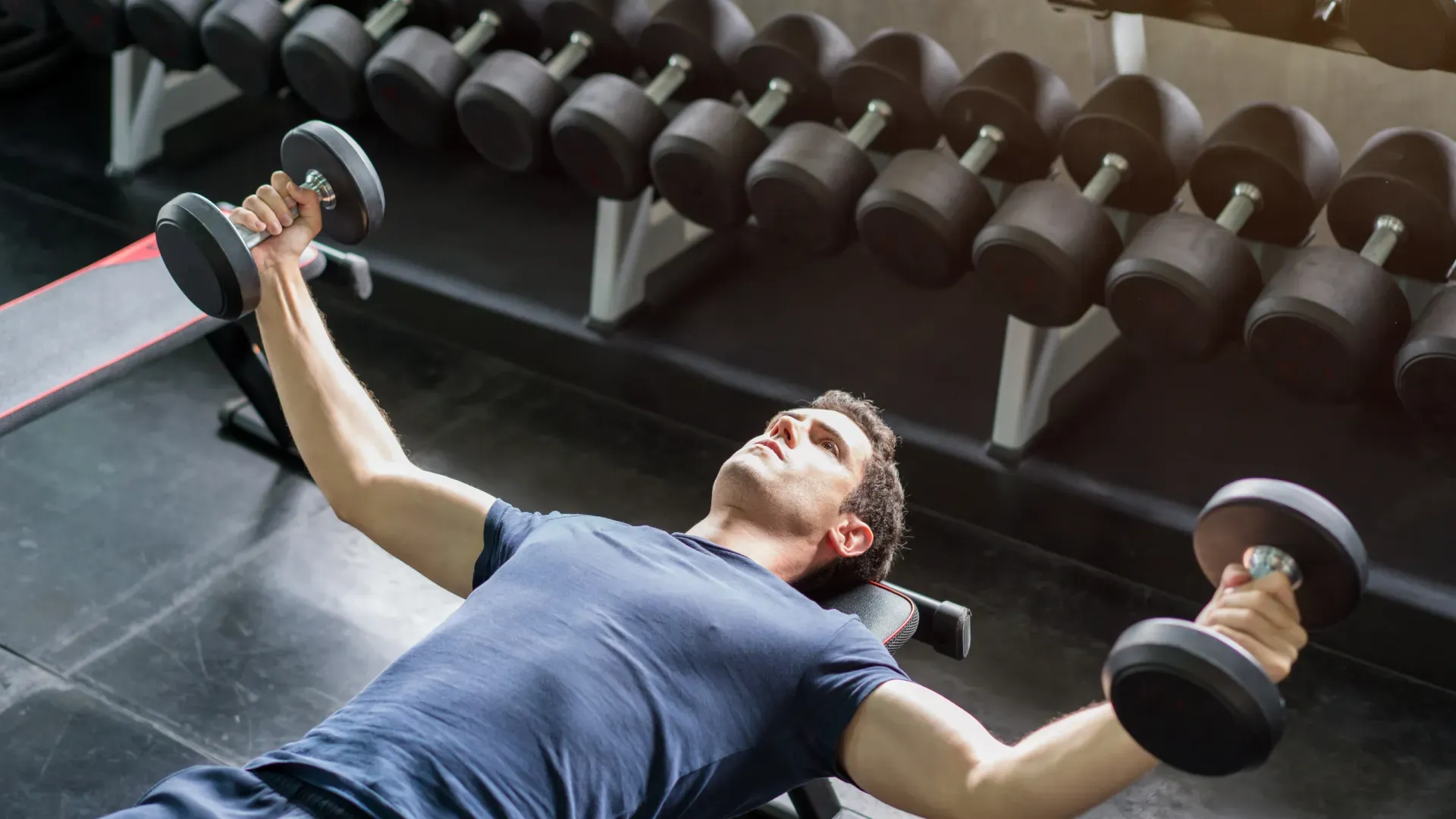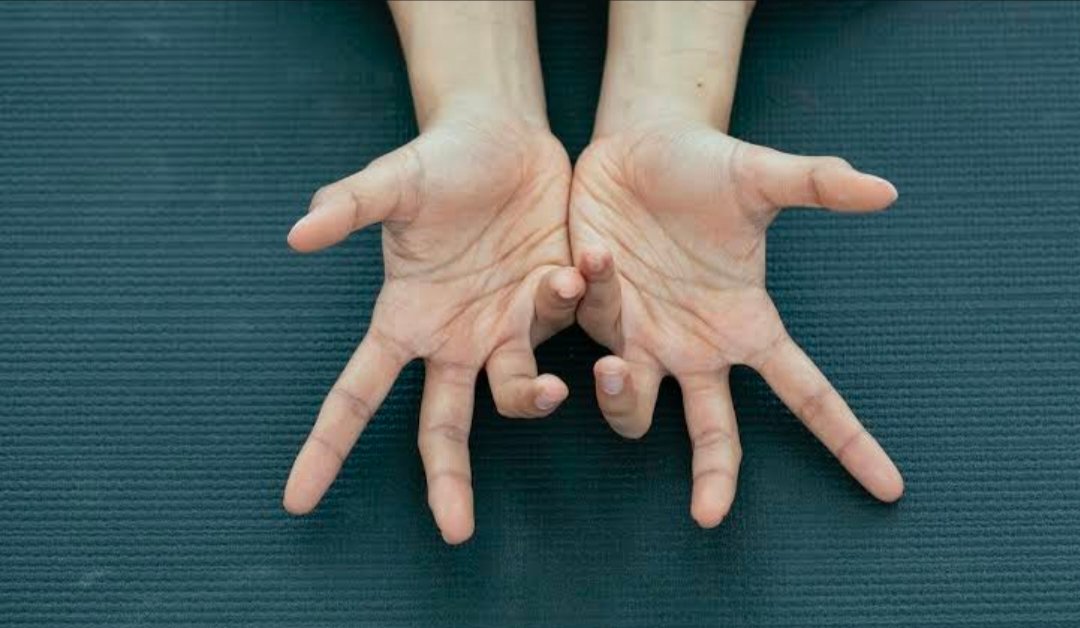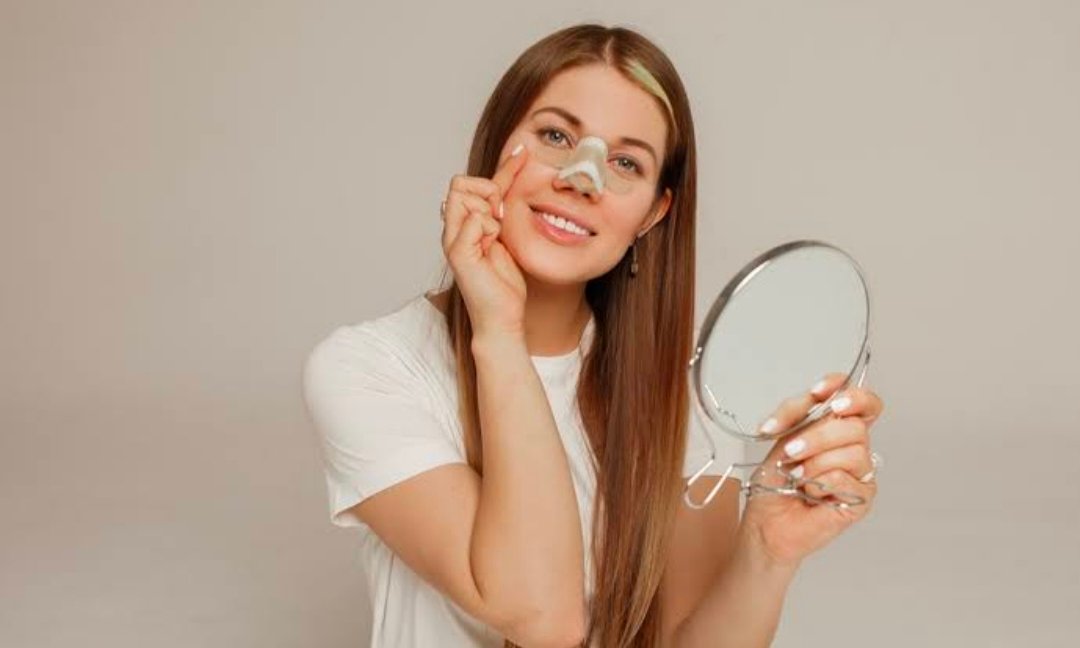Health
Wellhealthorganic.com How to Build Muscle Know Tips to Increase Muscles

Want to know how to gain muscle mass quickly? We can help you with a list of tips on exercises, nutrition and supplements!
Want to find out how to gain muscle mass quickly? We can help you! First of all, it is important to remember that there is no gain without effort. Therefore, doing physical activity regularly is essential, in addition to following a diet appropriate for your goal. However, investing in the right supplements can help you speed up this process.
Here, you will see how gaining muscles mass fast can be possible! Remembering that, with guidance from physical education professionals and nutritionists, everything becomes safer and more efficient, ok? Check it out below!
How to gain muscle mass?
Anyone who wants to know how to gain muscle mass should pay attention to three fundamental pillars: training, nutrition and rest. In addition to working hard on the weights and consuming enough proteins and nutrients, it is necessary to prioritize sleeping hours and rest days. After all, hypertrophy occurs at this time, while the worked muscle recovers. It is worth remembering that gaining muscle mass is something that is built gradually. And this requires discipline and self-knowledge about your own body. In addition, having the guidance of a professional is always an important advantage!
What to do to gain muscle mass quickly?
When talking about building muscles faster, it is important to recap some basic principles that we mentioned in the previous topic. After all, more than achieving this objective, it is important to consider that this process is always built based on your health and well-being.
So, some main tips for gaining muscles mass are:
1. Train at least 3 to 6 times a week
Choose the ideal training frequency for you considering a minimum of 3 times a week and a maximum of 6. This way, you ensure that the same muscle group is worked 1 to 2 times in this interval.
2. Prioritize sleep time
Rest is essential for muscle regeneration and, consequently, hypertrophy. Therefore, prioritize a break of at least 48 hours to work out the same part of your body/muscle – and be sure to reserve at least 8 hours of sleep every night.
3. Change the workout/set every 4 or 5 weeks
Changing the training or series constantly and intelligently guarantees different stimuli to the muscles. This helps to speed up the process of gaining muscle mass and is very beneficial for the body. However, don’t forget to look for a trained professional to help you with this change of training.
4. Perform the exercises slowly and concentrated
When talking about how to gain muscle mass fast, details like the way you perform each exercise can make all the difference. To work the region well, contract the muscle worked well during execution. And don’t be in a hurry! Make the movement slowly and with concentration.
5. Going hard in training
Muscles only grow if you use force, so lifting heavy is an important detail. But don’t go in expecting to lift the heaviest weight on the machine, okay? Always increase your load progressively, respecting your body’s limits – but don’t stop challenging yourself.
6. Invest in hydration
Staying hydrated is essential for gaining muscle mass because muscle is made up of 75% water. This means that you should aim to drink at least 2 or 3 liters of water per day along with good eating habits and a training routine. wellhealthorganic.com/how-to-build-muscle-know-tips-to-increase-muscles
7. Invest in supplementation and proper nutrition for your goal
And speaking of eating habits, a balanced diet, rich in proteins and good carbohydrates, is another key to success. Along with this, supplements also help to guarantee the supply of nutrients – especially since it is difficult to ingest the recommended amount just with meals.
How to gain muscle mass quickly with exercise: see 4 activities
Doing physical activities that help you gain muscle mass is the first (and essential) step to help you achieve your goal. That’s why we’ve listed some exercises that you can do with or without equipment, at the gym or at home. Then there’s no excuse for skipping your workout, right?
How to gain muscle mass with squats


Squats are a complete exercise! In addition to stimulating the cardiovascular system, they help reduce body fat and weight – which is part of how to gain muscle mass. You can perform squats in different ways and with numerous equipment to enhance the exercise, such as elastic bands, TRX, dumbbells or kettlebells. But, regardless of the model chosen, the stimulus is always positive for muscle formation.
How to gain muscle mass with push-ups


You could say that push-ups are like squats for your arms, but the exercise benefits several muscle groups, such as the back and abdomen. The legs can be stretched out in a plank, to make it more difficult, or the knees can be rested on the floor, to make it easier for beginners. Exercise is an example of how to gain muscle mass without overload.
How to gain muscle mass by climbing stairs


This is another exercise that shows how to gain muscle mass while combining the benefits of cardio training. In gyms, there are devices that simulate stairs so you can train at the speed and for as long as you want, but you can practice on the stairs in your building or at home, with a box. To intensify this practice, the tip is to invest in shin guards.
In CrossFit training, a more intense type of climb is common, in which participants jump onto a higher box. It is a great example of how to gain muscle mass, but if you have weak knees, for example, avoid this type of exercise.
How to gain muscle mass with bench presses


To gain muscles mass with this exercise, you need to use some weight. Rubber dumbbells are a great option to have at home, as they come in different weights and won’t damage your floor if dropped.
You can practice the bench press lying with your back on a comfortable surface, such as a gym mat. The grip, whether closed or open, also affects the muscle group being worked on. There are also many varieties of exercise, you know? wellhealthorganic.com/how-to-build-muscle-know-tips-to-increase-muscles
How to gain muscle mass quickly with diet? Take note of the tips
Diet is a key factor in determining how exercise will shape your body. Eating healthy proteins to support the muscle-building process and quality carbohydrates to keep your energy levels up are general recommendations – and are appropriate for anyone who wants to know how to gain muscle mass fast.
“It is important to follow a meal plan calculated by a nutritionist, avoid restrictive diets and not skip meals thinking that it will speed up the process of gaining mass. Gaining mass is the moment when we need a greater supply of nutrients along with adequate exercise,” highlights Bruna.
During the process, to avoid getting discouraged, the expert’s tip is to observe small advances: “keep an eye on your intestinal functioning, disposition, restful sleep and performance in training”, she advises. And, of course, if you are looking for fast and efficient results, don’t forget to consult a nutritionist, ok? That way, you can’t go wrong! Enjoy Hint Today.
Health
Hamerduim: What It Is, Causes, and How to Treat It


A Hamerduim, also called a claw thumb, is a condition in which the thumb remains in a bent position. This condition can lead to pain, stiffness and limitations in the movement of the thumb. In this article we will discuss what exactly a Hamerduim is, what causes it and how it can be treated.
What is a Hamerduim?
A Hamerduim is a condition of the thumb in which the first phalanx (metacarpal phalanx) is bent and the second phalanx (proximal phalanx) is straight. This causes the thumb to appear bent, as if it were a hammer. This condition can lead to pain and stiffness in the thumb, as well as limitations in the movement of the thumb.
Hamerduim cause
There are several causes of Hamerduim, including:
- Arthritis: Arthritis, especially osteoarthritis, can lead to hardening and calcification of the ligaments and joints in the hand, causing the thumb to remain in a bent position.
- Injury: Injury to the hand or thumb can lead to damage to the ligaments and joints, causing the thumb to remain in a bent position.
- Heredity: Some people have a hereditary predisposition to Hamerduim.
- Overuse: Overuse of the thumb, such as pinching and grasping, can lead to Hamerduim.
Treatment of a Hamerduim
There are several treatment options for Hamerduim, depending on the severity and cause of the condition.
- Physical Therapy: Physical therapy can help strengthen and stretch the muscles and ligaments in the hand, allowing the thumb to return to a normal position.
- Splinting: Wearing a splint can help support and straighten the thumb, reducing pain and stiffness.
- Injections: In some cases, corticosteroid injections may be used to reduce inflammation and pain.
- Surgery: In severe cases, surgery may be necessary to repair or replace the ligaments and joints in the hand. Surgical options can range from replacing the joints to applying splints or implantable devices to keep the thumb in a straight position.
- Medication: Pain relievers such as acetaminophen or ibuprofen can help reduce the pain and inflammation of mallet thumb.
It is important to remember that treatment for Hamerduim depends on the cause and severity. A doctor or physical therapist can develop a treatment plan that is tailored to the patient’s specific situation.
Prevention of Hamerduim
There are a number of things you can do to reduce your risk of developing Hammer Thumb, such as:
- Avoid excessive use of hands and fingers
- Stretch and strengthen the muscles and ligaments in the hands regularly
- Prevent injuries to the hands
- Use correct techniques when pinching and grabbing
- wear proper protection when performing activities that may put you at risk for Hammer Thumb.
Hamerduim surgery
A Hamerduim operation is a surgical procedure performed to fix the base of the thumb in cases of Hamerduim. A Hamerduim is a condition in which the tendon of the adductor pollicis muscle, which is responsible for deflecting the thumb, separates from the base of the thumb and becomes stuck in the opposition of the thumb, making it impossible to keep the thumb straight.
During Hamerduim surgery, this tendon is replaced and attached to the base of the thumb, allowing the thumb to regain its normal function. The surgery can be performed using open or laparoscopic surgery. Recovery time after surgery varies from person to person, but often a period of immobilization and physical therapy is required to allow the thumb to fully heal.
Hamerduim Fake Nails
A Hamerduim can make it difficult to wear nail polish or care for nails because the thumb cannot be held in a normal position. However, there are special “Hamerduim nail plates” available that can be used to support the thumb while caring for the nails.
These ‘ false nails ‘ plates are often made of soft material, such as foam, and are designed to hold the thumb in the correct position while the nail is being cared for. They are often easily adjustable to the size of the thumb and can be easily attached with a hook and loop system or a velcro strip.
There are also alternatives that use devices such as pins, rings or a splint to hold the thumb in the correct position. It is always advisable to consult a doctor or physical therapist before using such products to ensure they are safe to use and suitable for your particular condition. Enjoy Hint Today.
Health
The Comprehensive Guide to Rhinoplasty: What You Need to Know


What Is Rhinoplasty?
Rhinoplasty, often called a nose job, is a highly specialized surgical procedure designed to reshape the nose. The primary motivations for undergoing this surgery fall into medical and cosmetic categories. Medically, rhinoplasty can correct breathing issues or repair deformities caused by injury or congenital conditions. Cosmetically, the surgery aims to enhance the aesthetic appearance of the nose, making it more harmonious with other facial features.
Who Is a Candidate for Rhinoplasty?
Rhinoplasty is not limited to individuals concerned with aesthetics; it is also valuable for those with functional nasal issues. Good candidates for rhinoplasty typically have a fully developed nose, are in good overall health, and have clear, realistic expectations about the results. Prospective patients should discuss their motivations and desired outcomes with a qualified surgeon to determine if they are suitable candidates. Medical evaluations and assessments ensure the patient is physically and mentally prepared for the surgery. If you are considering rhinoplasty Naperville or another location, it’s essential to know the ins and outs of the procedure.
Types of Rhinoplasty
Rhinoplasty is not a one-size-fits-all procedure; there are several types designed to address different needs:
- Open Rhinoplasty involves an incision along the columella, the tissue separating the nostrils. This approach gives the surgeon better visibility and access to the nasal structure, allowing for more extensive reshaping.
- Closed Rhinoplasty: In this method, all incisions are made inside the nostrils, leaving no visible scars. This approach is often employed for less extensive reshaping and offers a quicker recovery time.
- Revision Rhinoplasty: Sometimes, a secondary surgery is necessary to correct or refine the results of a previous rhinoplasty. This type is more complex and requires a highly skilled surgeon to succeed.
Reading about correcting nasal deformities might provide additional insights for those keen on understanding the different techniques used in nasal surgery.
Preparation and Recovery
Preparation for rhinoplasty involves multiple steps designed to optimize the surgical outcome. Prospective patients should thoroughly consult their surgeon to discuss options and set realistic goals. Medical evaluations may include blood tests and other assessments to ensure the patient’s fitness for surgery. Pre-operative photographs are often taken to aid in surgical planning.
Recovery is a critical part of the rhinoplast journey. Initially, patients can expect swelling and bruising, which usually subside within a few weeks. Most individuals resume normal activities within 2-4 weeks, but full recovery can take up to a year. Following the surgeon’s post-operative care instructions and attending follow-up appointments are essential for achieving the best possible results during this period.
Risks and Benefits
As with any surgery, rhinoplasty has risks alongside benefits. The most commonly reported complications include infection, anesthesia reactions, and nasal obstruction. However, these risks are significantly minimized when a skilled, board-certified surgeon performs the procedure.
The benefits of rhinoplasty often extend beyond physical appearance. Many patients experience increased self-confidence and improved nasal function. For those suffering from breathing issues, the surgery can be life-changing. Knowing the potential risks and benefits helps patients make informed decisions and set realistic expectations for the outcome.
Cost and Financing Options
The cost of rhinoplasty varies widely, influenced by factors such as the surgeon’s expertise, the complexity of the procedure, and the clinic’s location. On average, rhinoplasty can range from $5,000 to $10,000. This cost typically includes the surgeon’s fee, anesthesia, and facility charges.
Given the significant investment, many clinics offer financing options to make the procedure more accessible. Understanding average cosmetic surgery costs and exploring different financing plans can help prospective patients manage their budgets effectively.
Common Myths About Rhinoplasty
Many myths surround nose reshaping surgery, which often skews public perception. One common myth is that rhinoplasty is only for cosmetic purposes. However, many procedures are performed to correct functional issues like deviated septums or other breathing problems.
Another misconception is that rhinoplasty is an option only for the wealthy. On the contrary, many financing options and payment plans make the surgery accessible to a broader range of people. Dispelling these myths through thorough research and consultations can help make a more informed decision.
Choosing a Surgeon
The success of any rhinoplasty procedure largely hinges on the surgeon’s expertise and experience. When selecting a surgeon, patients should look for board certification and experience in performing rhinoplast. Recommendations from friends or online reviews can also provide valuable insights.
Consulting with multiple surgeons before making a final choice can be beneficial. During these consultations, asking about the surgeon’s experience and techniques and reviewing before-and-after photos can help make an informed decision. Don’t hesitate to ask questions and express concerns; a good surgeon will always be willing to provide detailed answers and explain the process thoroughly. Enjoy Hint Today.
Health
The Ultimate Guide To Achieving Glowing Skin: Skincare Tips and Tricks


Glowing skin has become the hallmark of health and beauty, coveted by many and achieved through conscientious skincare practices. Achieving that elusive radiance involves a combination of hydration, nutritious diet, tailored skincare routines, sun protection, and professional treatments. Understanding your skin’s needs and providing it with the essential care can significantly enhance its natural glow and vitality. Below, explore the quintessential steps to unlock the secret to a healthier, more radiant complexion that is sure to turn heads.
The Essential Role of Hydration for Radiant Skin
Hydration is key to healthy, glowing skin. Drinking plenty of water daily helps plump up skin cells for a youthful appearance and flushes out toxins that dull the complexion. Pair internal hydration with topical moisturizers containing hyaluronic acid or glycerin to lock in moisture and strengthen the skin barrier. Rich creams are best for dry skin, while lighter lotions or gels suit oily skin.
Environmental factors like heating and air conditioning can deplete skin moisture. Using a humidifier helps maintain hydration, creating a balanced environment for your skin. Minimize alcohol and caffeine, which dehydrate the skin, and opt for herbal teas and infused water instead. For more skincare tips, visit https://rossiderm.com/.
Balancing Your Diet for Optimal Skin Health
The saying “you are what you eat” is particularly relevant for skin health. A balanced diet rich in fruits, vegetables, lean proteins, and antioxidants can protect the skin from cellular damage. Consuming foods like berries, leafy greens, and nuts can significantly enhance skin’s glow. Omega-3 fatty acids found in fish like salmon and walnuts are essential for maintaining skin health, providing lipids and reducing dryness. Avocados are rich in healthy fats and vitamins E and C.
High sugar intake can lead to inflammation and collagen damage, accelerating the aging process. Moderation is key to prevent skin conditions like acne. Hydration is crucial for nutrient absorption and circulation, and drinking water is essential for maintaining optimal skin health.
Crafting a Skincare Routine for Your Skin Type
Skincare for different skin types requires a tailored approach. Oily skin may benefit from gel-based cleansers, while dry skin might need cream-based ones. Exfoliation is crucial for cell turnover and revealing fresh skin, but frequency and method should be customized to avoid irritation.
Targeted treatments like serums address specific skin concerns like hyperpigmentation, fine lines, or acne. Select treatments that align with your goals and integrate them into your routine. Applying skin care products in the correct sequence ensures proper absorption and effectiveness, starting with lighter formulas and ending with heavier creams. Consistency in your skincare routine is key to improving skin health and radiance.
Importance of Sun Protection in Preventing Skin Damage


Sun damage is a significant threat to skin health, causing premature aging, hyperpigmentation, and increased skin cancer risk. To protect against this, daily application of sunscreen with an SPF of at least 30 is essential, regardless of the season or outdoor activities. Physical sunscreens with zinc oxide or titanium dioxide offer broad-spectrum protection, while chemical sunscreens are lightweight and clear.
Protective measures like wearing wide-brimmed hats, UV-blocking sunglasses, and protective clothing can also reduce UV exposure. Seeking shade during peak sun hours can also minimize UV ray impact. Reapplying sunscreen every two hours, especially after swimming or sweating, is crucial for maintaining effective sun protection throughout the day.
Exploring Professional Skin Treatments and Their Benefits
At-home skincare routines are essential, but certain skin issues may benefit from professional treatments like chemical peels, laser therapy, and microdermabrasion. For aging, Botox or dermal fillers can offer instant results, but require an experienced practitioner for safety and effectiveness. Research and find a reputable professional to guide you through the best options. Frequent visits to a skincare professional can monitor skin health and provide valuable insights.
They can adjust your skincare regimen as your skin changes due to factors like age, hormonal shifts, or lifestyle changes. An initial consultation with a dermatologist is a wise investment to gain a deeper understanding of your skin type and conditions, allowing you to make preventive decisions and avoid misguided treatments.
Overall, the journey to achieving glowing skin is an intricate balance of lifestyle choices, consistent skincare practices, and occasional professional intervention. By adhering to these foundational steps, anyone can enhance their skin’s health and radiance, revealing their best complexion. Remember, the secret to beautiful skin lies in the daily dedication to nurturing and protecting it. Enjoy Hint Today.
























